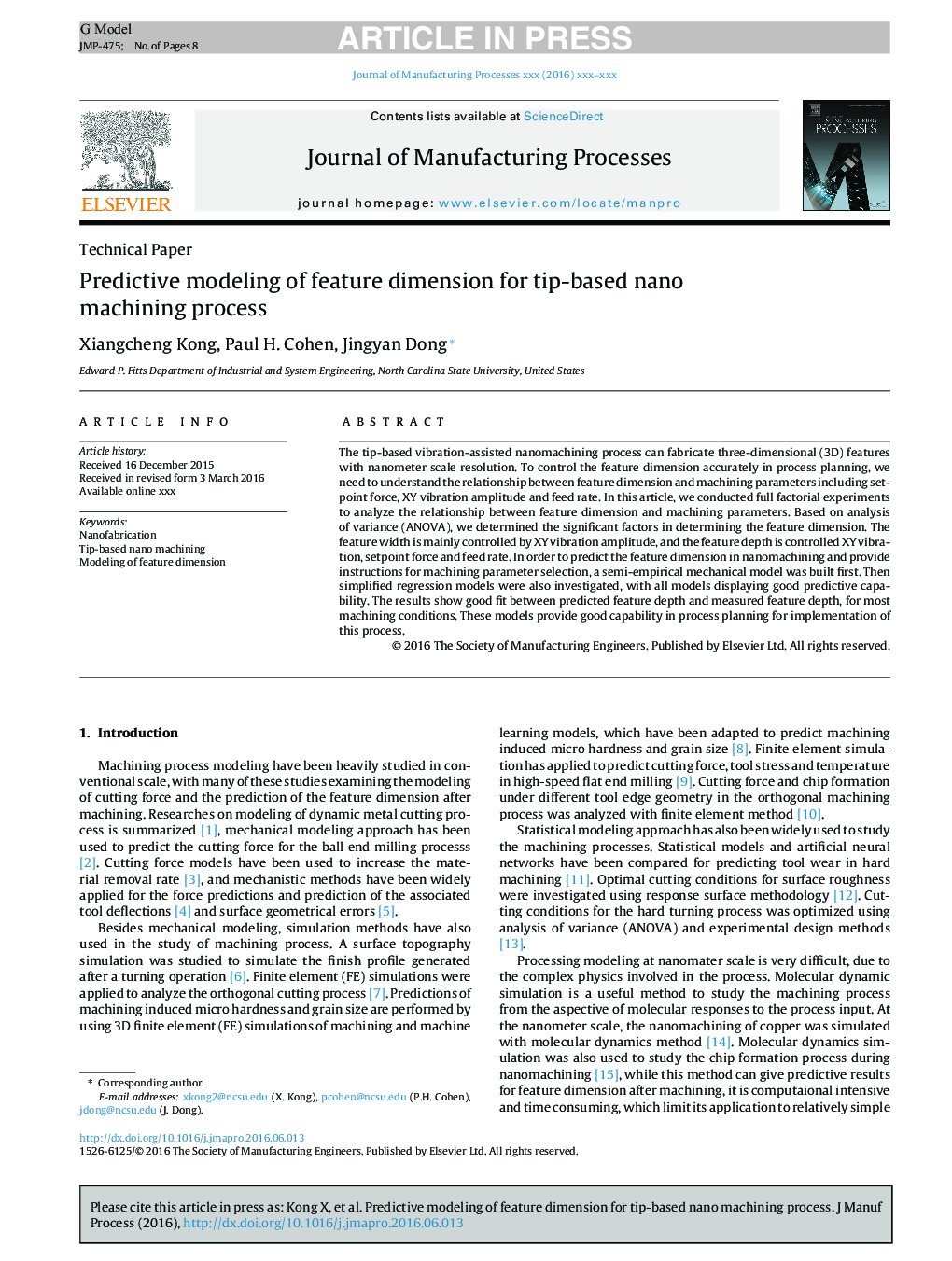| Article ID | Journal | Published Year | Pages | File Type |
|---|---|---|---|---|
| 8048111 | Journal of Manufacturing Processes | 2016 | 8 Pages |
Abstract
The tip-based vibration-assisted nanomachining process can fabricate three-dimensional (3D) features with nanometer scale resolution. To control the feature dimension accurately in process planning, we need to understand the relationship between feature dimension and machining parameters including setpoint force, XY vibration amplitude and feed rate. In this article, we conducted full factorial experiments to analyze the relationship between feature dimension and machining parameters. Based on analysis of variance (ANOVA), we determined the significant factors in determining the feature dimension. The feature width is mainly controlled by XY vibration amplitude, and the feature depth is controlled XY vibration, setpoint force and feed rate. In order to predict the feature dimension in nanomachining and provide instructions for machining parameter selection, a semi-empirical mechanical model was built first. Then simplified regression models were also investigated, with all models displaying good predictive capability. The results show good fit between predicted feature depth and measured feature depth, for most machining conditions. These models provide good capability in process planning for implementation of this process.
Keywords
Related Topics
Physical Sciences and Engineering
Engineering
Industrial and Manufacturing Engineering
Authors
Xiangcheng Kong, Paul H. Cohen, Jingyan Dong,
